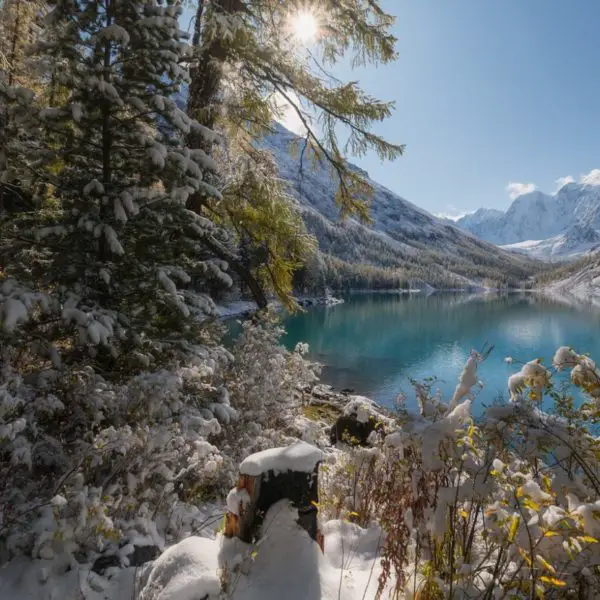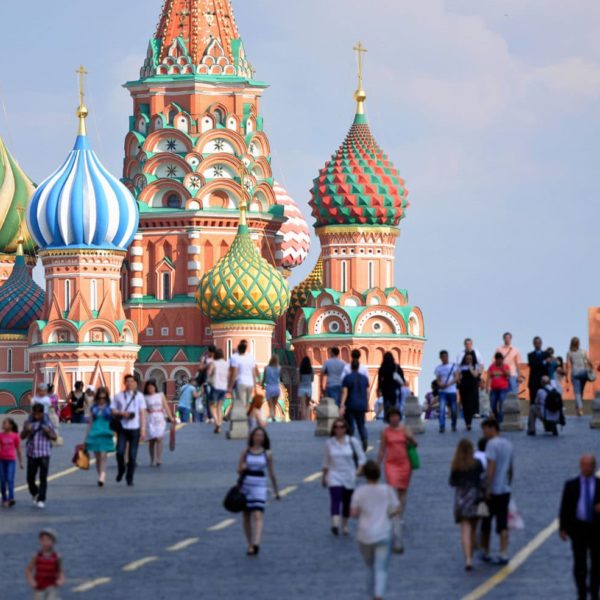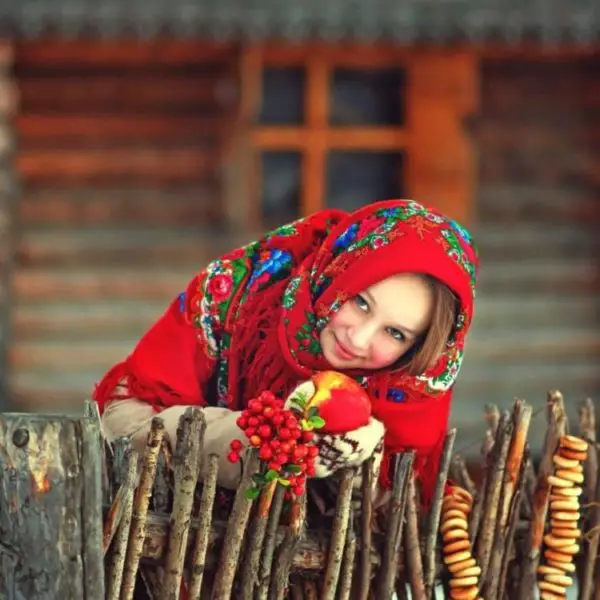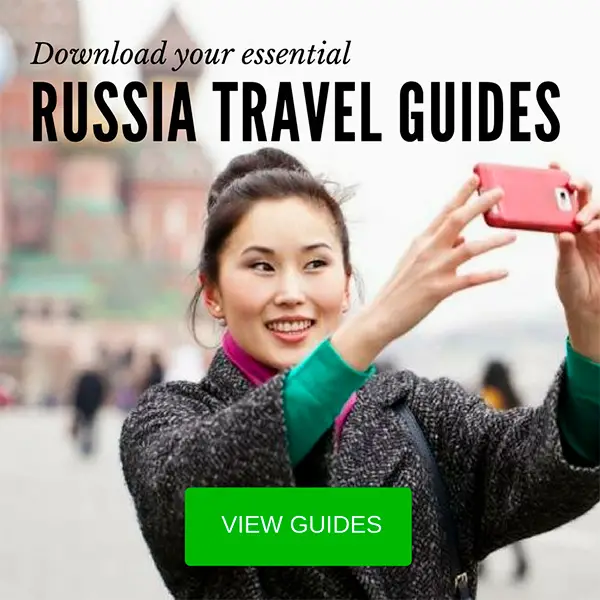Altai Travel Guide - Known as Russia's Switzerland
Welcome to majestic Altai, a land of snow-capped mountains, fascinating nomadic tribes and heart-stopping wilderness adventures. One of the most beautiful and pristine regions in all of Russia, the borders of this wild and untamed domain touch the semi-deserts of Mongolia and the vast Kazakh plains.
Still well off the mainstream travel radar, Altai supports a growing, community-based eco-tourism industry. A veritable paradise for hikers, climbers, rafters and nature photography enthusiasts, Altai’s major drawcard outside of its breathtaking scenery, is the remarkably intact ancient culture of its various indigenous tribes, a few of whom still live a traditional, semi-nomadic lifestyle and practice shamanic religious beliefs.
The World Heritage-listed Golden Mountains of Altai are a refuge for some of the world’s rarest animal species. In rugged beauty of these stunning ranges, one can hike for days on end in complete solitude. After decades of obscurity, this tremendous region is finally beginning to open up to a new breed of adventure traveller.
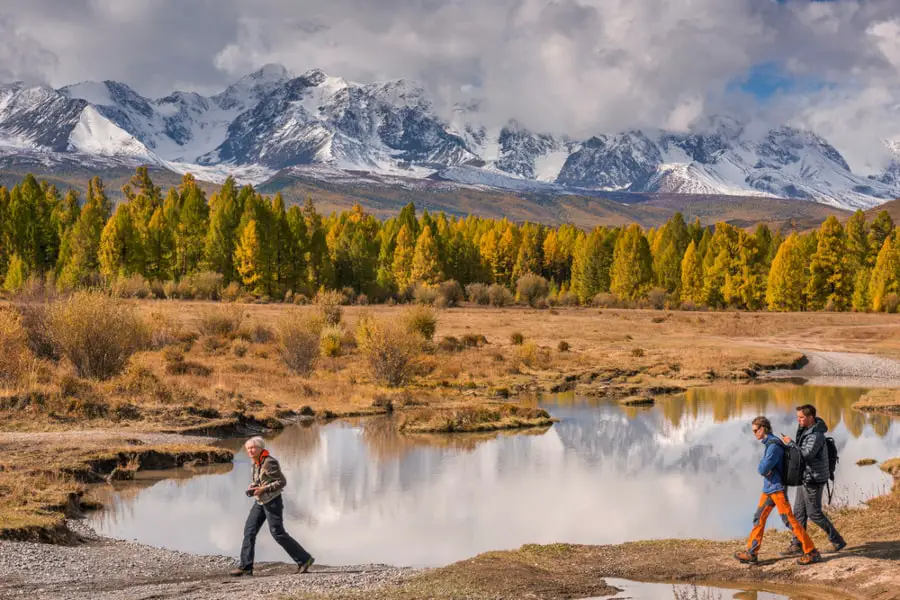
Finding practical information on Altai isn’t always easy, so we’ve put together this Altai Travel Guide to help you plan everything from where to go, what to do and when to visit, right down to the practicalities of travelling, trekking and touring in the remote, rarely-visited area. We’ll also provide you with a brief snapshot of the lifestyles and customs of the ethnic Altaians who call the region home, and what you can expect from the local culture and cuisine.
Table of Contents
Why Travel to Altai. Sights to Explore.
The Altai Republic spans some 92,500sqm, straddling the junction of the Russian Siberian taiga, the steppes of Kazakhstan and the semi-deserts of Mongolia. A quarter of Altai is covered in forest, while its rivers, consisting of 20,000 tributaries, wind their way through mountain valleys and gorges northward to the Arctic Ocean. An immense region with an incredible amount to offer, seeing even a fraction of the Altai would take years of hardcore travel! In fact, much of the Altai Republic is still virtually inaccessible to the ordinary tourist.
Thankfully, we’ve come up with an authoritative list of Altai’s most extraordinary destinations and must-dos, and why they should be on any adventure traveller’s bucket list.
The Golden Mountains of Altai
Spanning a staggering total of 1,611,457 hectares, Altai’s mighty mountain range encompasses the Altai and Katun Natural Reserves, Lake Teletskoye and Belukha Mountain. The Golden Mountains are is a UNESCO World Heritage site, forming the major mountain range in Western Siberia and the source of its greatest rivers – the Ob and the Irtysh. The region harbours the most diverse vegetation and microclimatic zones in central Siberia, from steppe to dense mixed forest and high alpine vegetation. The dramatic Altai ranges are home to nearly 700 animal species, including the mountain ram, reindeer and the critically endangered snow leopard.
Belukha Mounta in
The real beauty of the Altai region is Mount Belukha, the highest peak of Siberia and Russia (4,506 m). It is actually 1,000 m higher than the surrounding mountain ridges, and it is one of the most popular attractions in the region among adherents of active tourism. Glaciers cover some 70 square km of its surface, as the mountain lies in a region of year-round snows. Those that have managed to reach Belukha’s ice-covered crest quickly get a sense of the enigmatic and mystical force of the Altai Mountains.
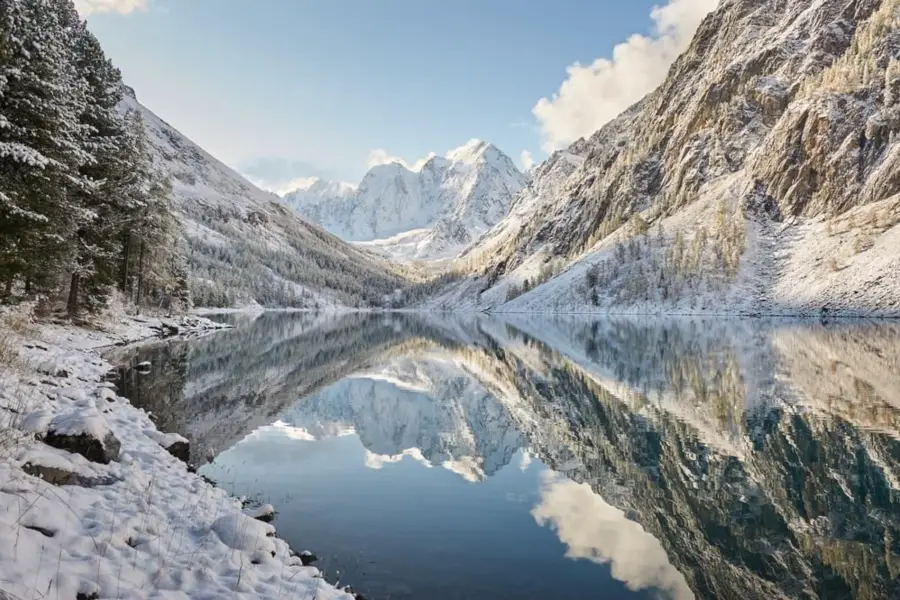
The climbing season usually begins in May and ends in September. In summer the temperature on the top of the mountains is about 6 C° on average. However, even in
Aktru Glacier
There are nearly 1,500 glaciers in Altai, the result of having survived five different glacial periods. Aktru is the most accessible one. It is one of the most impressive places in the mountains and we highly recommend visiting it if you have more than 5 days at Altai.
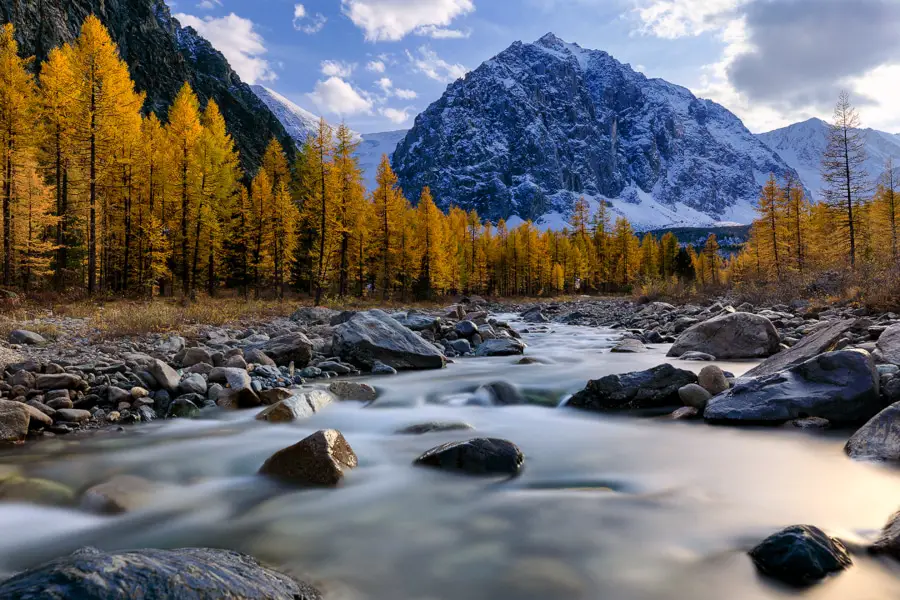
The heights start from 1,500m and go up to 3,000m high. At the height of 2,500
Altai’s lakes, rivers and waterfalls
Lake Teletskoye
Part of the Golden Mountains region, stunning Lake Teletskoye is revered by the local people as Altyn Kol (the Golden Lake). The largest lake in Altai, it is 78km long and 5km wide where it lies between the mountain ridges of Korbu and Al-tyntu. Many locals believe no visitor has truly experienced the true beauty of Altai until they have seen the holy lake with their own eyes.
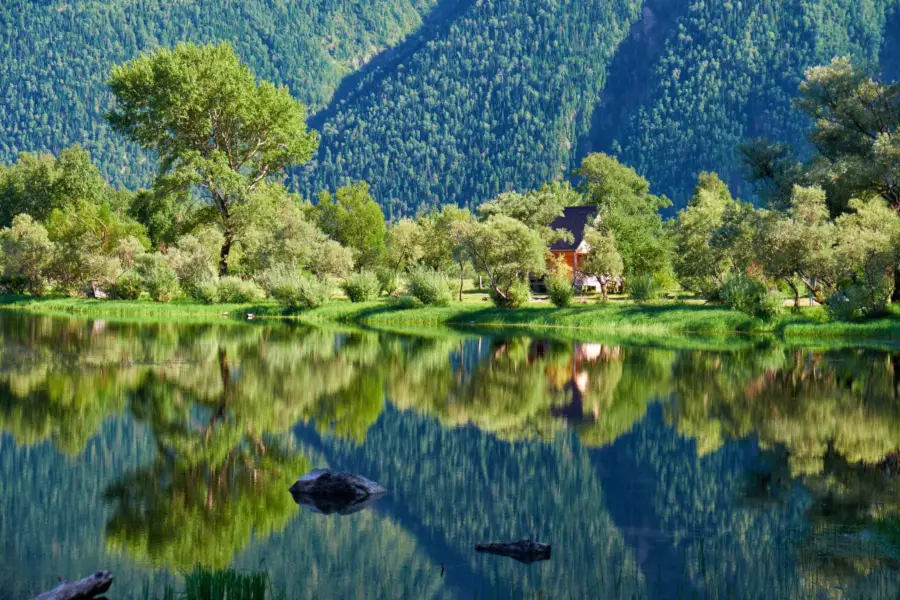
Watching the sublime scenery pass by on a boat trip is truly marvellous, but the region has, even more, to see on land, with numerous day and overnight hikes to explore. Climbing to the top of Tilant Tuu observation hill rewards with breathtaking views of almost the entire lake, while a day trek to the remote meeting place of Teletskoye and the Tretya River ends in series of cascading miniature waterfalls. The lakeside village of Belyo is home to friendly indigenous inhabitants and is renowned as the warmest place in western Siberia.
Katun River
Fed by the glaciers at the top of Mt Belukha, the Katun River races through a series of valleys and gorges in the Altai mountain range, before meeting the Biya River at Lake Teletskoye. The two rivers join to form the mighty Ob. Flowing all the way to the Arctic Ocean, the 3,650km long Ob is the world’s seventh longest river. The Katun holds an important place in the spirituality and culture of the Altaians.
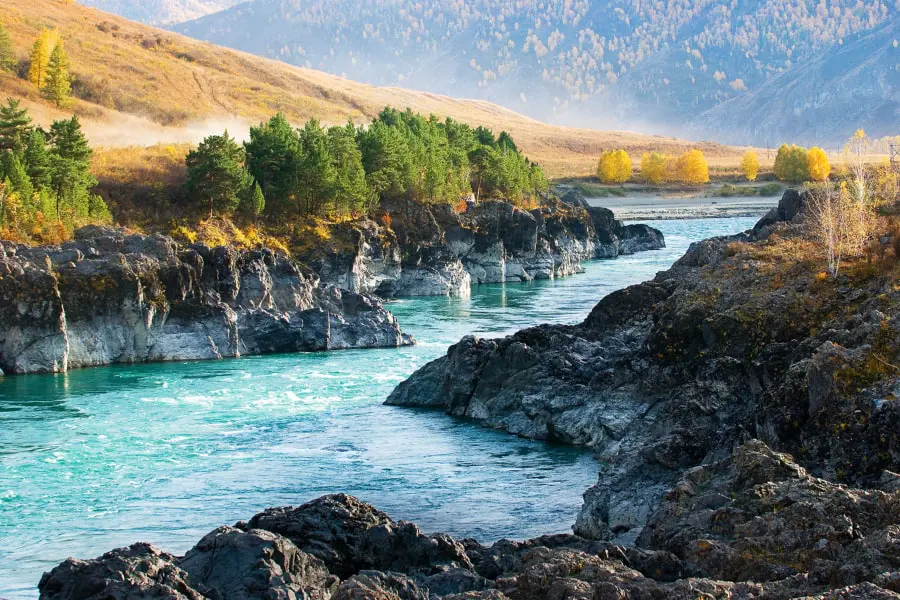
Katun and its tributaries, like the Chuya River, are among Russia’s best whitewater rafting destinations, with heart-pumpingly quick rapids and wave trains plunging into tranquil, glassy pools, all surrounded by Altai’s tremendous forest and mountain scenery.
The Blue Geyser Lake
The Blue Geyser lake is located in the Ulagansky district, close to the Aktash village. It descends 2 meters deep and it is roughly 30 meters wide. Its enchanting blue hues are a result of the thermal springs which simmer beneath the surface, forcing a sand-clay debris to the top.
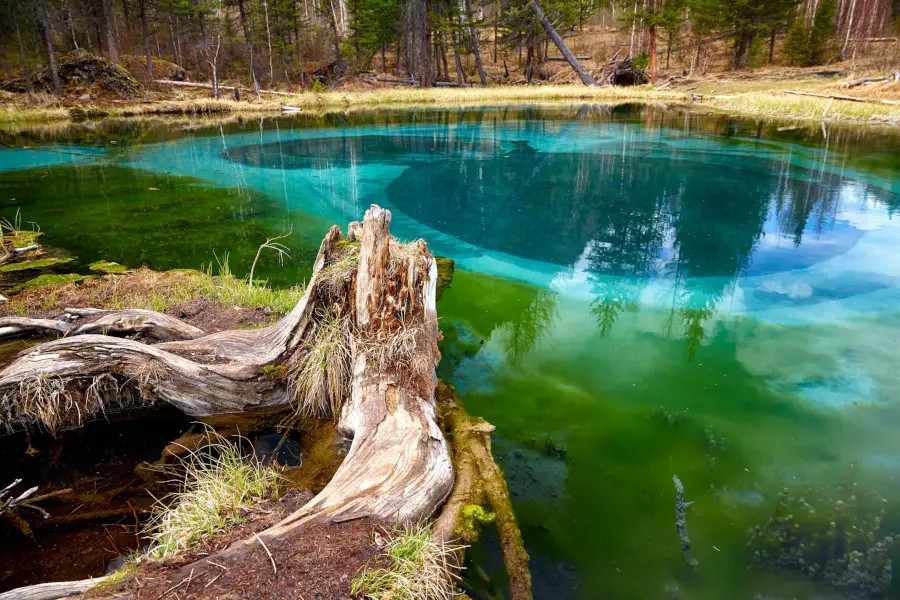
As their form changes with the geyser, they can often be seen ‘dancing’ as they create new patterns in the lake. The lake itself is almost transparent, and its crystal clear surface is unwavering as it does not freeze even during the winter months. Staring into the heart of the lake, you can observe moss and sea grass swaying in motion with the thermal bubbles, almost as though the lake were breathing.
Seven Lakes Valley
In the shadow of Mount Ak Oyuk (3,670m) lay the impressive Ak Ouk Valley, home of the seven lakes – a picturesque landscape of mountain streams, pooling glacial runoff and mountain lakes. Each lake has its own unique charm and colour, characterised by the stones which line the bottom. Your visit to the seven lakes valley will be marked by wonderful hues of aquamarine, turquoise and piercing clear blue water.
Merging of Katun and Chuya Rivers
There is a place in Altai, where two majestic rivers Chuya and Katun merge, creating beautiful scenery. From ancient times the confluence of this two rivers is seen as sacred and respected place in Altai. This place even got its own name – “Chui-Oozy”, which is translated from the Altai “mouth of the Chuya River”.
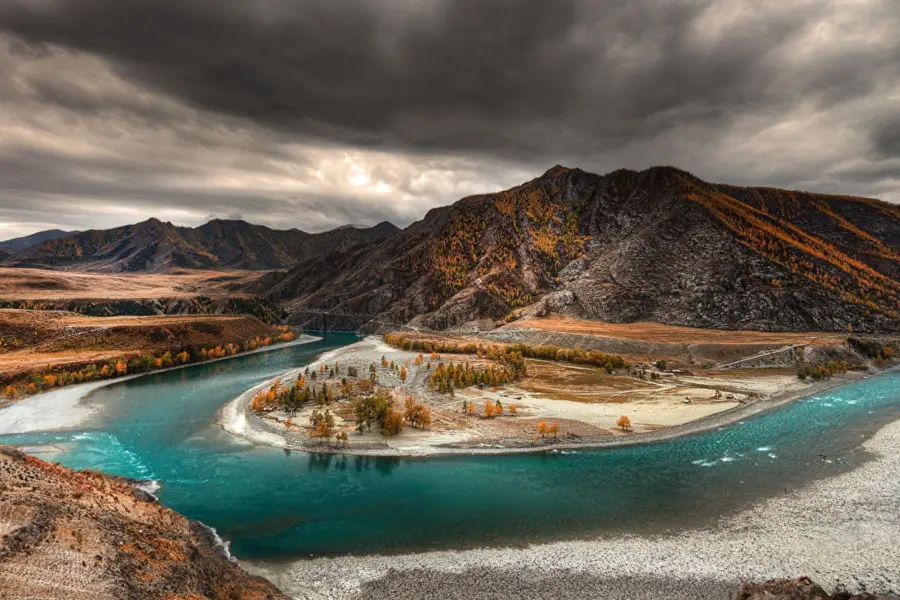
Uchar Waterfall
There are several stunning waterfalls in the region such as the Korbu, Kamyshlinksy and Tekelyu, but Uchar is one of the most spectacular of them all. The Uchar waterfall is located on the Chulcha river and is the largest waterfall in the Altai region, with a stream fall of 160 meters. The waterfall itself is relatively young, having evolved about 100- 150 years ago.
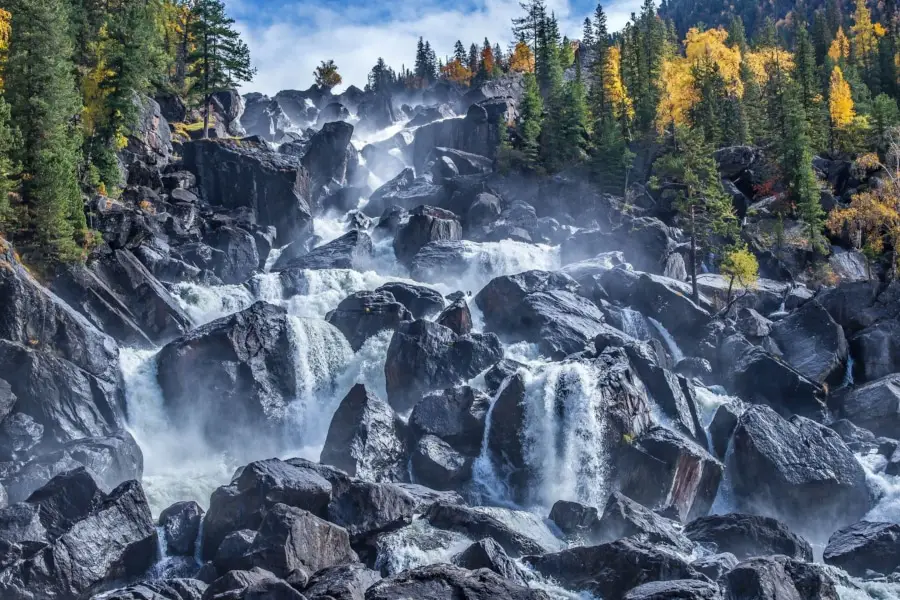
The name, ‘Uchar’ is roughly translated to mean ‘inaccessible’, and this reflects the slightly difficult trail that one must traverse in order to glimpse its majesty. The path itself follows the valley to the waterfall, hugging the mouth of the Chulcha river. One of the easier ways to reach this monolith is by taking a boat from the top of Lake Teletskoye and across the water at Artybash village before following the road to the mouth of the river. The path requires river crossing and the navigation of boulders, so it is best done with a guide.
Pristine Landscapes of Altai
Kyzyl Chin – The Rainbow Mountains
The Rainbow Mountains of Altai, or Kyzyl- Chin are a range of rolling hills, dowsed in hues of orange, burgundy, mustard and white.
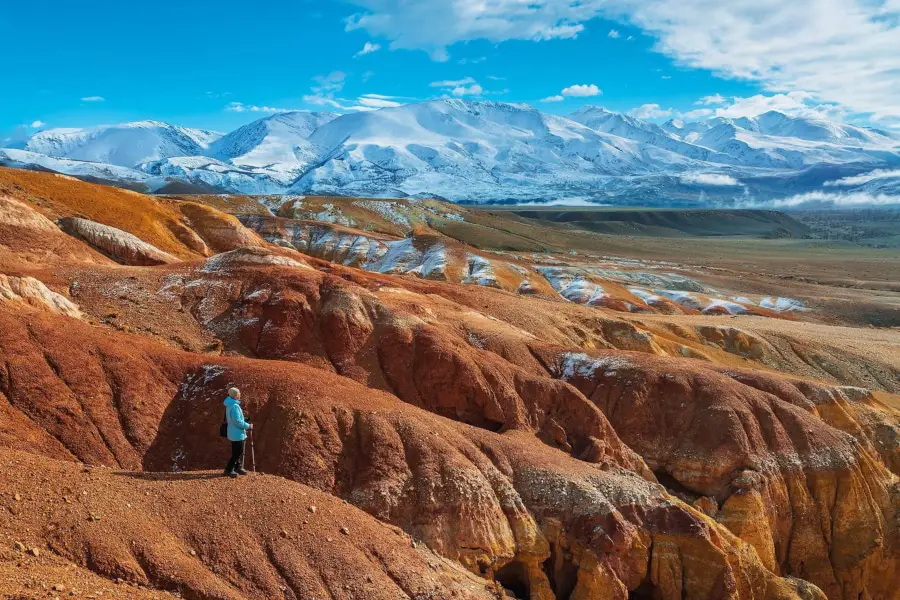
Their majestic colour display is a result of different layers of coloured clay which is abundant in the soil of this region, and which gives it a Mars-like appearance. This area is also thought to have once been a sea, and so it is common to find fossils and ammonites throughout the terrain.
Stone Mushrooms at Akkurum
Emerging from 2 to 7 meters high from the mountainside like enokitake, these outcrops of stone have been weathered into mushroom-like stone figures. Age
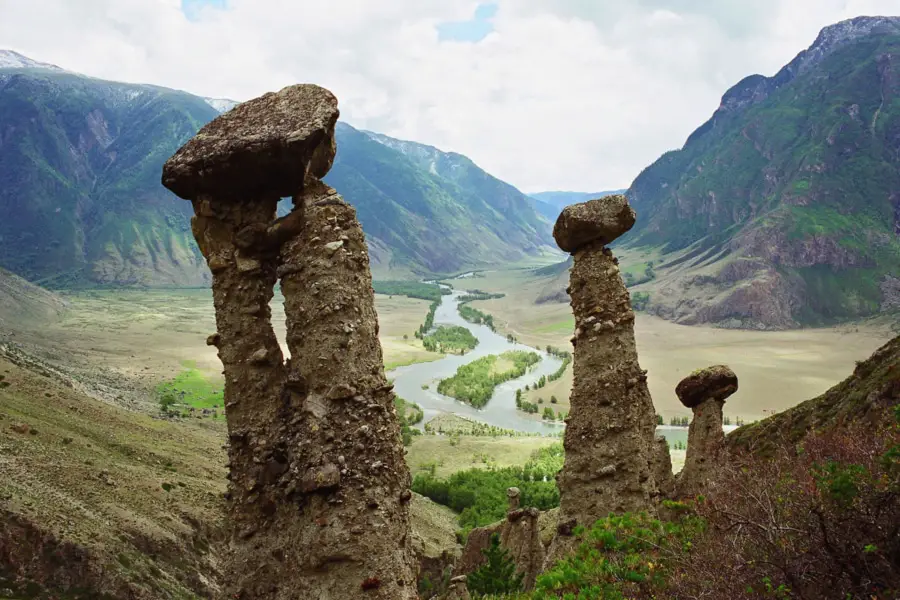
These fascinating natural carvings can be found on the banks of the Chulyshman River. You need to cross the river and climb the trail that runs along a steep slope to reach the two large «spawn».
Katu- Yaryk Pass
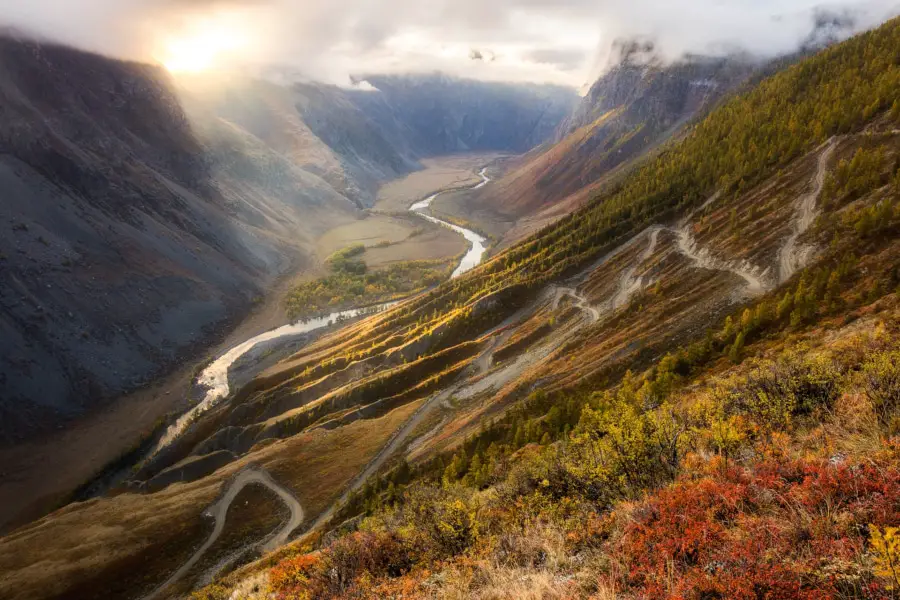
There are some outstanding vistas throughout the Altai region, but one of the best views comes from traversing the Katu-Yaryk pass. At 1,188m above sea level, it is one of the scariest high mountain passes in the world due to its loose gravel terrain, narrow roads and lack of barriers. If you’re brave enough to navigate the side of this cliff, you’ll be welcomed by exquisite views from the Chulyshman valley.
Chuisky Highway – Siberia’s Silk Road
The Chuysky Trakt (also known as the Chuya Highway) is the main highway in the Republic of Altai, connecting Russia to the Mongolian border. This long, lonely road begins in Novosibirsk and traverses along almost the entire length of the Altai mountain range, extending 962km in total. Completely paved, the Chuysky Trakt is unquestionably the most scenically stunning road in Siberia. Many experienced overland travellers consider Chuysky to be among the most beautiful asphalt roads in the world.
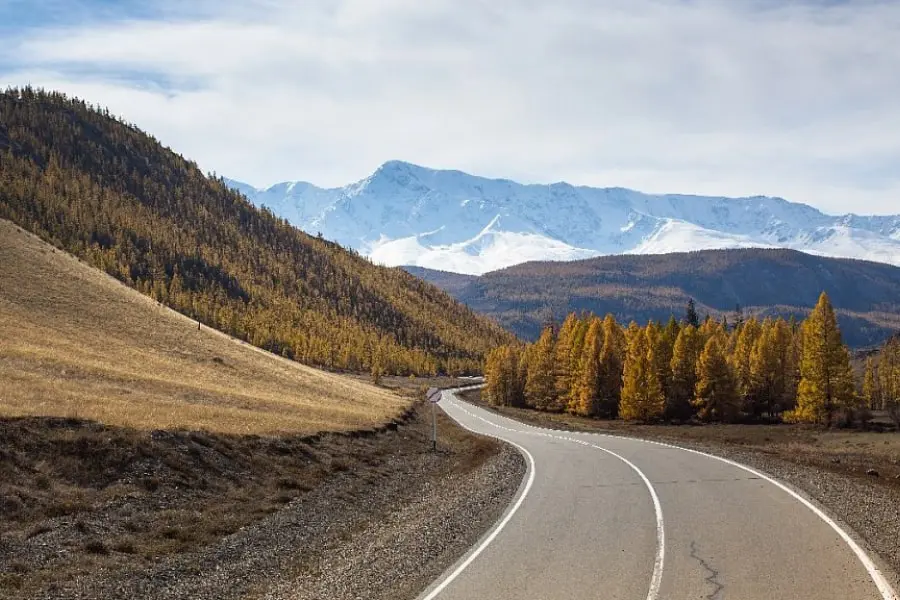
Karakol Valley
This stunning valley is one of the highlights of the Golden Mountain region. With a glacial river running through its herb and wildflower-covered meadows, stands of spruce and fir trees sprout from the steep slopes, while snow-covered peaks loom large in the distance. The area is home to a handful of small indigenous villages, and tourism in the valley, a designated National Park, is carefully managed by the local people.
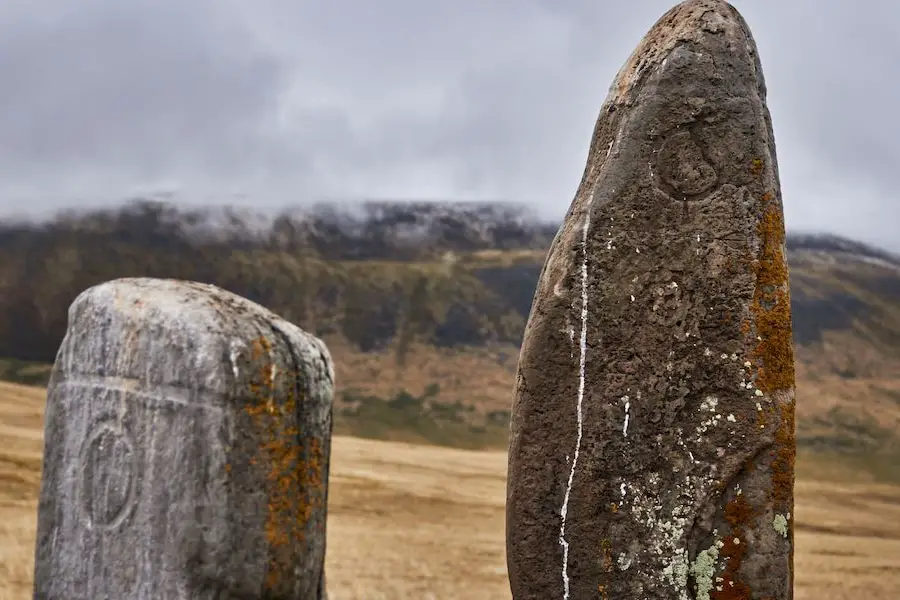
A small ski base operates in winter, while spring and summer is prime hiking and camping season. The Karakol is an important archaeological site, with many ancient burial grounds and shamanic rock paintings having been found in the valley’s foothills.
Saylyugemsky National Park
Situated at a crossroads in the Altai mountains, where the borders of Russia, Kazakhstan, China and Mongolia meet, Saylyugemsky is where the mountains, the steppe, the forest and the desert converge. Due to its remoteness, Saylyugemsky is a critical habitat for one of the most endangered animals in the world – the snow leopard. The hiking trails within this little-visited are challenging, but the rewards are truly extraordinary – breathtaking views over surreal high altitude desert landscapes, rivers and prairies, ice caps and glacial valleys.
Ukok Plateau
Mysterious and still largely unexplored, this is the most remote and isolated part of the Altai Mountains. The Plateau lies at the heart of the Eurasian continent, almost equidistant to the four oceans of the world. Home to rare animals such as argali sheep, black stork, steppe eagle, and that most elusive of all predators, the snow leopard, while few outsiders have set foot on the Ukok Plateau, others have lived here for generations.
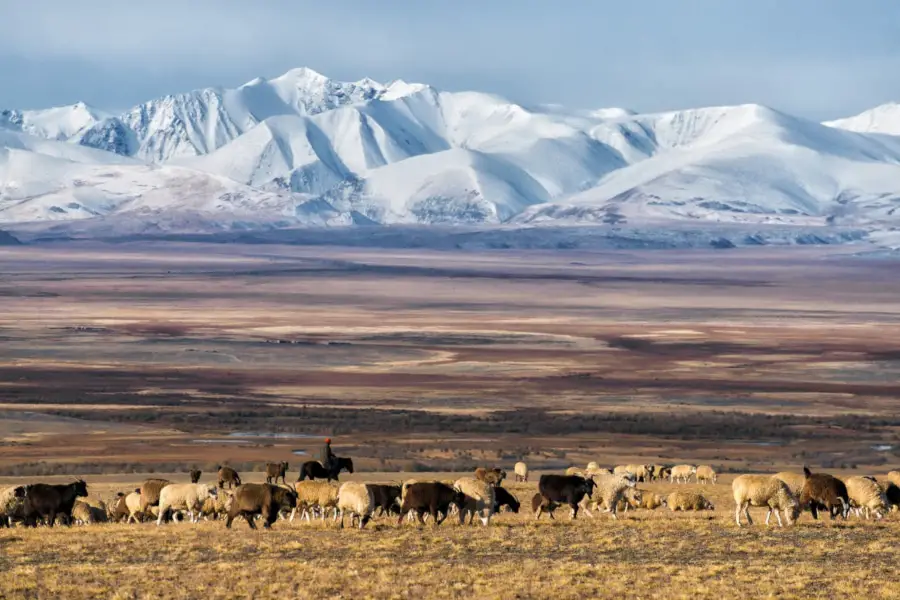
Scattered among Ukok’s cosmically silent grasslands are the yurt camps of the Altai Kazakh and Telengit nomads. Even before them, Scythian tribes made their mark here, leaving burial mounds, rock carvings and stone sculptures littered throughout the region. One of the most important archaeological finds in Russia was the 5th-century mummy, the ‘Siberian Ice Maiden’, unearthed here in 1983 and now housed in the Republican National Museum in Gorno-Altaisk.
Chemal
Chemal (population 4,000) is the capital of Chemalsky district. The region has the most developed tourist infrastructure of anywhere in Altai, with health resorts taking up prime spots on the banks of the Chemal and Katun rivers, a smattering of hotels, hostels and campsites. Much of the tourism in Chemal revolves around the Varota Sartikpayev Gorge, home of the old Chemal Hydroelectric Power Station. Bungee jumping is offered off the bridge above the hydro dam. Rafting and ziplining are also popular in summer.
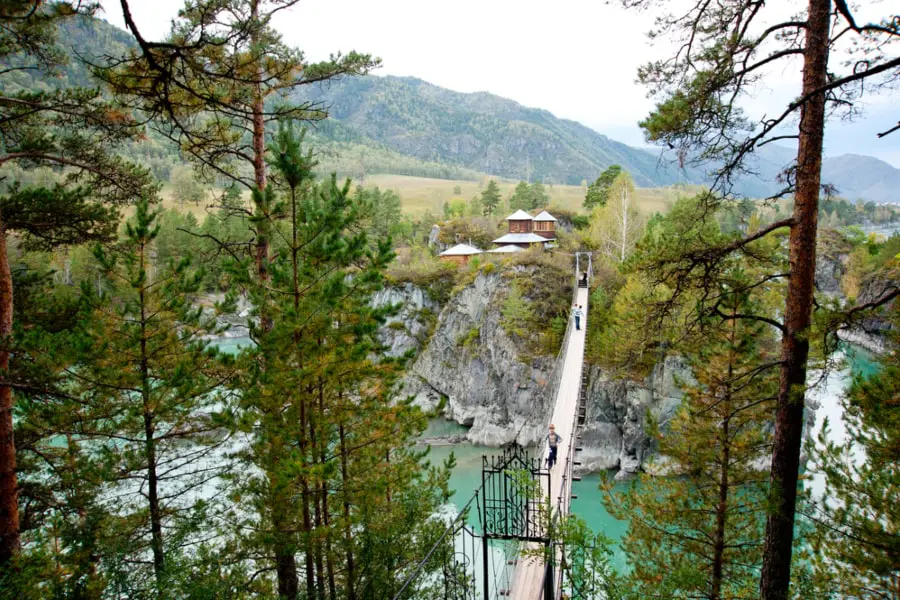
If you’ve come to Altai for peace and isolation, escape the tourist crowds of Chemal town and explore Chemalysky’s outlying villages, bucolic, rural paradises where shamanism is still central to the people’s beliefs and spiritual practices.
What to do in Altai
Hiking and Trekking
The Altai Mountains are sacred ground for passionate hikers, taking trekkers deep into one of the world’s last untouched wilderness regions. The scenery here is some of the most captivating on earth – evergreen forests, creeks and waterfalls, rivers rushing through narrow gorges, mirror-surfaced lakes and snow-capped peaks. To truly appreciate Altai’s incredibly varied landscapes and increase your chances of spotting wildlife such as argali mountain sheep, ibex, musk deer and lynx, you’ll want to trek for several days, camping close to water sources along the way.
Trekking tourism is relatively new to Altai – trails aren’t always well marked (if at all) and good maps are hard to come by. Going with a tour or accompanied by a local guide is strongly recommended.
Horse Riding
The horse is an integral part of the culture of many of Altai’s indigenous people. Nomads learn to ride horses as soon as they learn to walk. Altai’s horsemen are famed far and wide, and Altai breed horses legendary for their strength and reliability, so it’s no surprise that there are many who believe the best way to experience the region’s wilderness is on horseback.
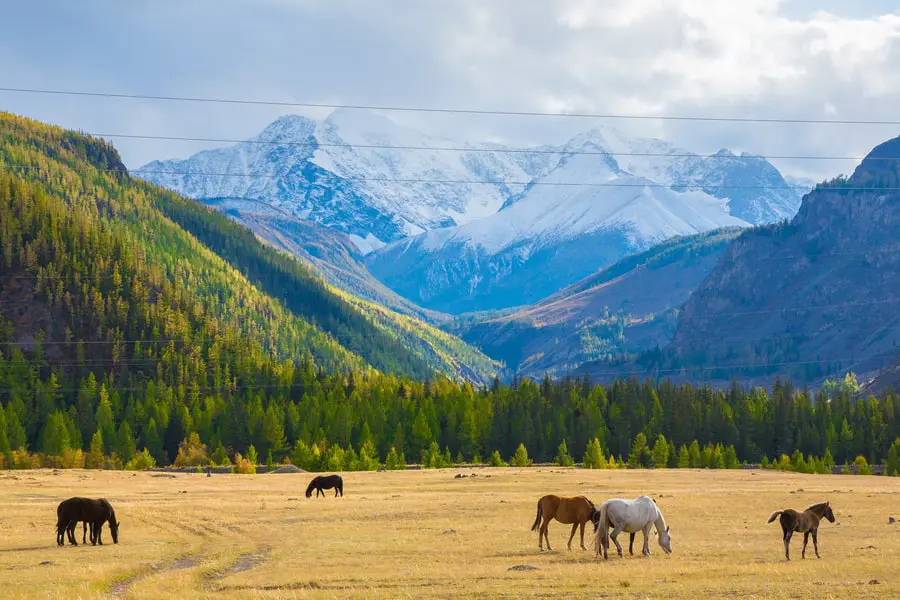
A multi-day horse riding trek will pass by crystalline rivers cutting through lush alpine meadows, dense forests, wide-open plains, wind-swept high steppe and dramatic mountain passes. Horse riding safaris provide a unique opportunity to interact with local cultures and experience an extraordinarily diverse array of landscapes.
Whitewater Rafting and Kayaking in Altai
The Altai Republic is Russia’s ultimate whitewater rafting and kayaking wonderland. The Katun River and its tributaries, like the Chuya River, alternately gush through wide valleys and squeeze their way through narrow canyons, creating the perfect conditions for whitewater adventuring.
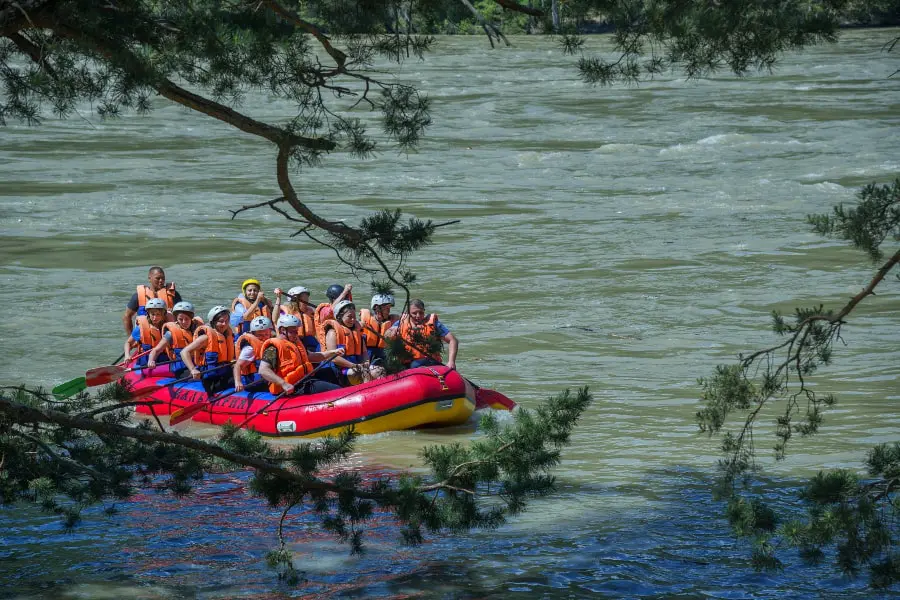
The Katun has rapids of all grades, allowing amateurs to enjoy short sessions in the gentler sections, as well as offering challenging, multi-day expeditions for extreme rafting enthusiasts. The annual Chuya Rally, which first kicked off in 1989, was the world’s first international rafting competition. Every year around June, the quiet, rural Chibit region in Altai becomes one of the world’s adventure capitals, as the competition attracts top rafters from around the globe.
Skiing and Winter Sports
With perfect winter conditions for skiing, snowboarding and snow tubing, the rapidly expanding settlement of Belokurikha, practically unknown until the end of the Soviet era, has become one of Siberia’s premier winter sports destinations. As an added bonus, unlike gloomy weather you might associate with Siberia throughout most of the year, Belokurikha enjoys sunshine roughly 260 days a year.
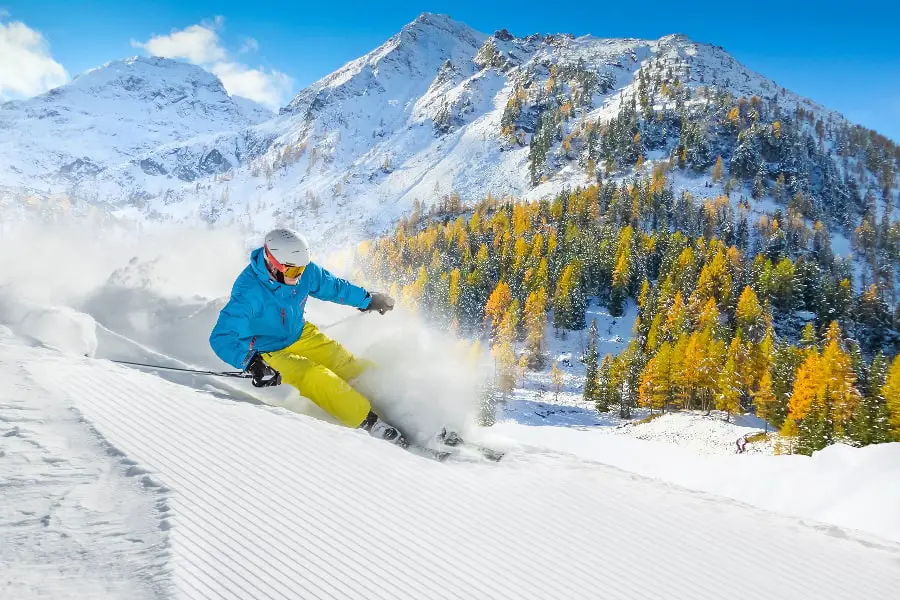
Today there are around 20 resorts and hotels in the picturesque Belokurikha River Valley, as well as a growing number of the health spa, restaurants and nightlife venues. A variety of trails are on offer for beginners through to hardcore enthusiasts. On every visitor’s must-do list is the climb to the peak of Mount Tserkovka. A 25-minute cable car ride takes you to the summit, and from the top it’s an adrenaline-pumping ski all the way down the 2,600m long slope – the longest run in the area by far.
The two other main slopes are Katun, which is split into two parts with two cable lifts in operation. At the top of Katun is another lift that ferries skiers up to Severny, a narrower, faster and much more challenging trail.
Photography in Altai
The Altai Mountains have a kind of wild beauty that seems almost impossible to comprehend. Mighty mountain ranges piercing through the clouds, tumbling gorges, verdant valleys crisscrossed by glacier-fed streams and alpine forests shrouded in mist.
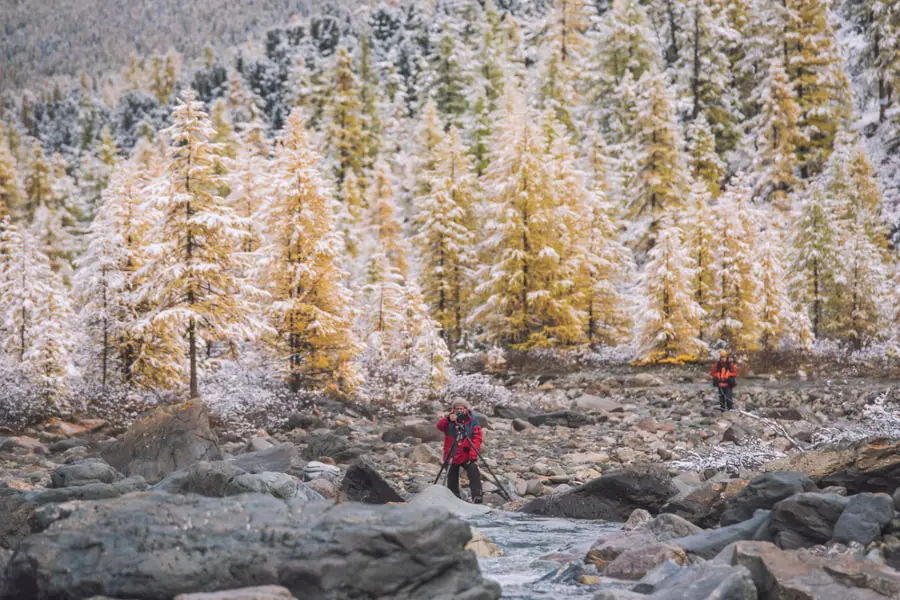
Altai is full of landscapes so extraordinary they seem like scenes from a fantasy, a mythical otherworld. And with so few outsiders visiting this region, they may as well be. For landscape photographers, Altai is a lost paradise, a dreamscape where few have pointed their lenses before. Take a roadtrip along the Chusky Trakt and Katu-Yaryk Pass and the photo opportunities from the high altitude viewpoints are staggering.
Cultural Immersion
For generations, the inhabitants of the Altai Republic lived in almost complete isolation, continuing to practice their semi-nomadic lifestyles, cultural traditions and religious customs with little influence from the outside world. While the republic today is also home to many people of ethnic Russian ancestry, over a third of the population are indigenous speakers of the Altaian language.
The People of Altai – Culture and Cuisine
The one million square mile Altai-Sayan Ecoregion (designated by the World Wildlife Fund, and including small areas of China, Kazakhstan and Mongolia) is home to 5 million people, speaking 40 languages. The indigenous population are known collectively as the Altaians, descendants of the Turkic tribes with ancient cultural links to the Mongols.
Among the Altaians are various clans or tribes, with their own unique traditions and cultural practices. Some of the main groups are the Tubalar, Chelkans and Kumandin of Northern Altai, and the Altai-Kizhi, Teleut, Teles and Telengit of Southern Altai. Each tribe speaks its own dialect of the Altai language. Today, indigenous Altaians make up about 34% of the Altai Republics total population of 206,000. Around 57% of the population are ethnic Russians, while the other major ethnic group, the Kazakhs, account for just over 6% of the population.
While at one time, most Altai people lived nomadic and semi-nomadic lifestyles, relying on horses and the building of mobile yurts to move around the mountainous terrain, today many Altaians prefer to live in spacious ails (six-sided conical huts) within permanent rural settlements. Many indigenous Altaian villages can be found in the fertile valleys near the Katun River and its tributaries. with attached summer kitchens used for drying cheese, meat and preparing drinks such as chegan (a lightly fizzy yoghurt-based drink) and a mild, milky alcoholic spirit known as archaka.
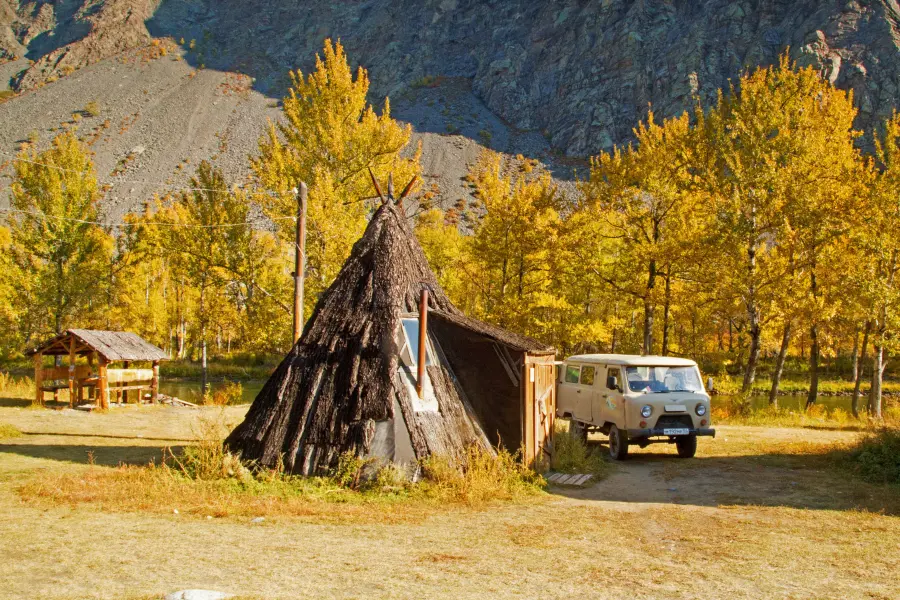
Religion and traditions of Altai people
Altaians have traditionally practised native religions based on shamanism, as well as Buddhism and Burkhanism or Ak Jang (“White Faith”), a newer religious movement that began to flourish among Altaians communities beginning in the early 1900s. Burkanists belong to family clans that revere their own totem plants and animals. The Burkanists pray to a variety of spirits, including legendary figures from traditional oral epics, which are recounted to this day in lengthy and complex performances by masterful throat singers. Like Burkanism, Altai shamanism survives largely through oral tradition. Without written prayers and canonical texts outlining principles, declarations, rules and commandments, religious practices and beliefs are passed on through oral teachings, visual symbolism, ritual and ceremony.
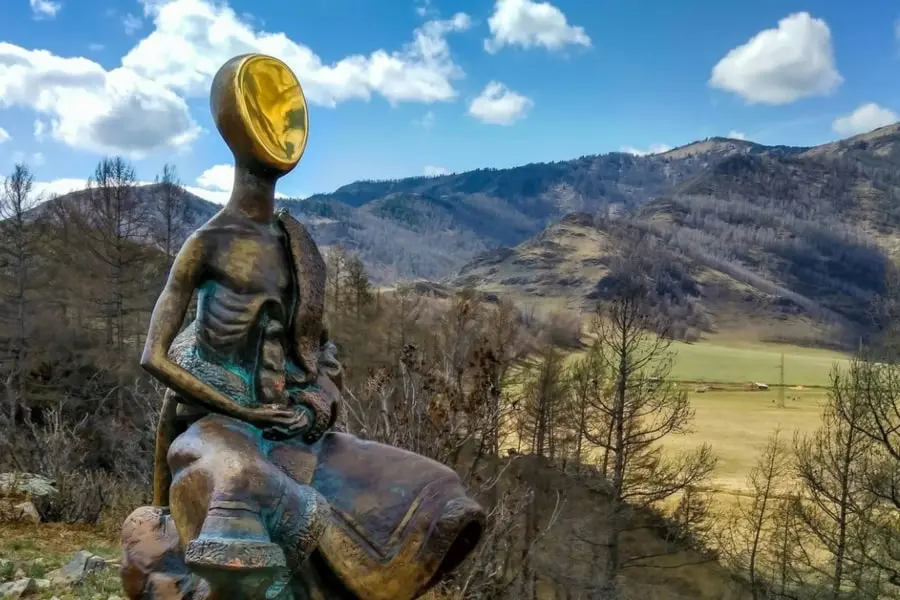
Altai also harbours a small community of ethnic Russian Old Believers in the Uymon valley, near Lake Multinsky. Uymon village was founded by the Old Believers 300 years ago as a place where they could continue to practice as Orthodox Christians without persecution from the Russian Imperials, and later the Soviets. The village’s Museum of the Old Believers is dedicated to preserving the stories of these proud and resilient survivors.
Many indigenous Altaian settlements and nomadic camps can be found in the fertile valleys near the Katun River and its tributaries. In recent years, certain villages have begun to open their doors to respectful, responsible tourism on their lands. Tours focusing on cultural immersion often visit villages, providing foreign guests with an intimate insight into the lifestyles and customs of today’s Altaians. You may be given the chance to sample home-cooked Altai cuisine, witness a traditional throat singing performance and even meet with a village shaman.
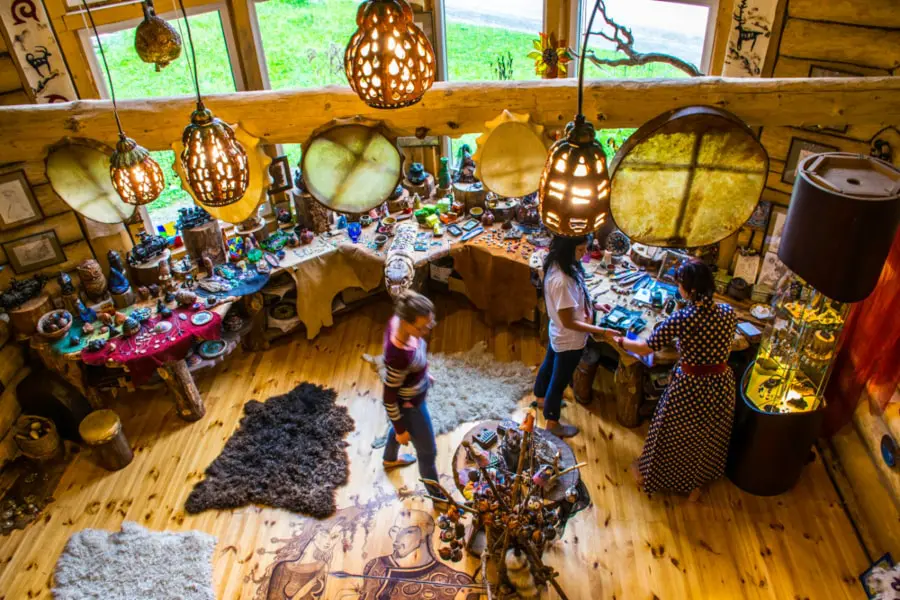
At certain times of the year, travellers with an interest in traditional nomadic culture can arrange to spend up to week travelling with the nomadic Telengites. With only 2,400 remaining, they are one of the smallest indigenous groups in Russia.
Altai Kaichi and Throat Singing
Among the most famous ancestral traditions known among the Altai is throat singing. The style of throat singing or ‘overtone singing’, (as it sounds as though the vocalist is singing two notes in separate frequencies at the same time) performed in Altai is unique to certain cultures in Siberia and Mongolia.
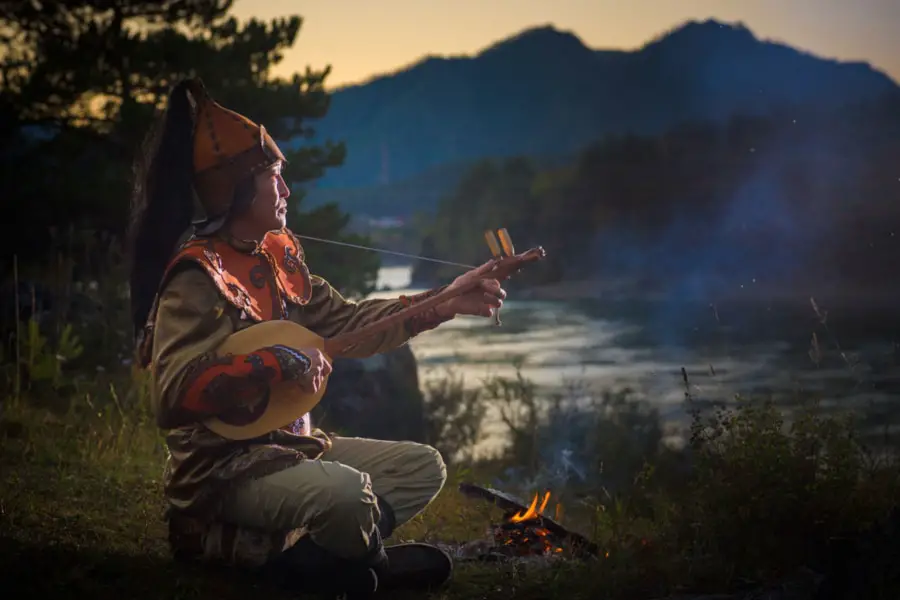
Storytellers, known as kaichi, perform folk stories and heroic epics, passed down by the generations, through the medium of throat singing. Sometimes they are accompanied by music on the tapsure, a two-stringed instrument. If you are lucky enough to spend time with friendly Altaian community, do not miss the chance to folk
Altai Cuisine
As a historically nomadic, herding culture, Altai cuisine is based largely on meat and milk. Yaks, as well as cattle, goat and horse provide the primary sources of meat and dairy. Other foods, such as pine nuts, mushrooms and honey, are foraged from the woods in season.
Milk is used to make drinks such as chegen (a lightly fizzy yoghurt-based drink) and a mild, milky alcoholic spirit known as archaka). Cheese, called kurut is made from chegen. Smoked over wood on an open fire, kurut is a very hard cheese with a strong and salty flavour and can last for very long time.
Some popular meat dishes you’re likely to come across in cafes and restaurants include:
- Byyr – barbecued meat (usually mutton liver), prepared shashlik-style on wooden skewers and cooked vertically beside an open fire
- Kerzen – another style of barbecue using large, diced pieces of mutton meat
- Miun – Meat cooked on the bone on an open fire until is soft and tender, served in a broth with carrots and onions
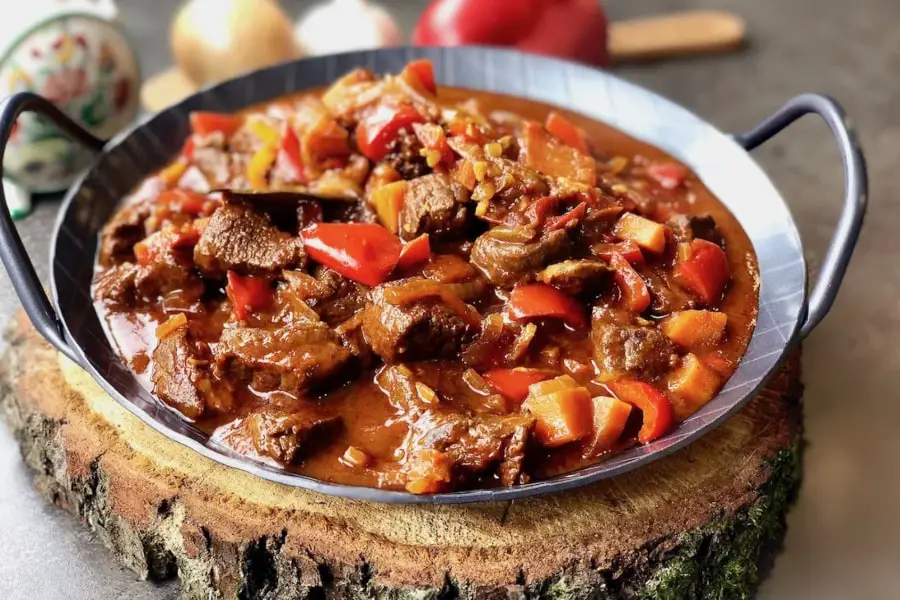
Another staple is kocho, or Altai barley soup. This soup is made from a meat broth of lam, horse or beef on the bone. Altai cuisine tends to be simple but hearty, using few spices and seasonings. For kocho, usually only salt and dried wild onion are added to the broth for extra flavour, followed by barley grains, which give the soup its thick and creamy texture, perfect for warming the stomach in the winter months.
Festivals and Events in Altai
The Altai are primarily a cattle-herding people, so unsurprisingly, some of their most important national holidays are closely tied to the farming calendar. The Altaians also celebrate a number of religious holidays. Traditionally, the Altai people held strong beliefs in shamanism, and followed animistic beliefs which perceive that all of nature – animals, plants, rocks, rivers and mountains – are alive and interconnected, and that every season and natural phenomenon posses a spirit. Religious events among the Altai are usually connected to the worship of these spirits.
Two of the most significant events on the Altai calendar are tazhyl byur and saary byur, transitory times between the seasons when nomadic tribes would shift from one pasture to another. In June, the appearance of a full moon symbolises the start of summer and the tazhtl byur (green leaves) festival, a time to give thanks to the season’s blessings and the emergence of new pastures for their grazing cattle herds. Other festivals are devoted to autumn and the riches foraged from the taiga forests, while chagan bayram (‘White Holiday”), held in February is celebrated as the beginning of the New Year according to the lunar calendar.
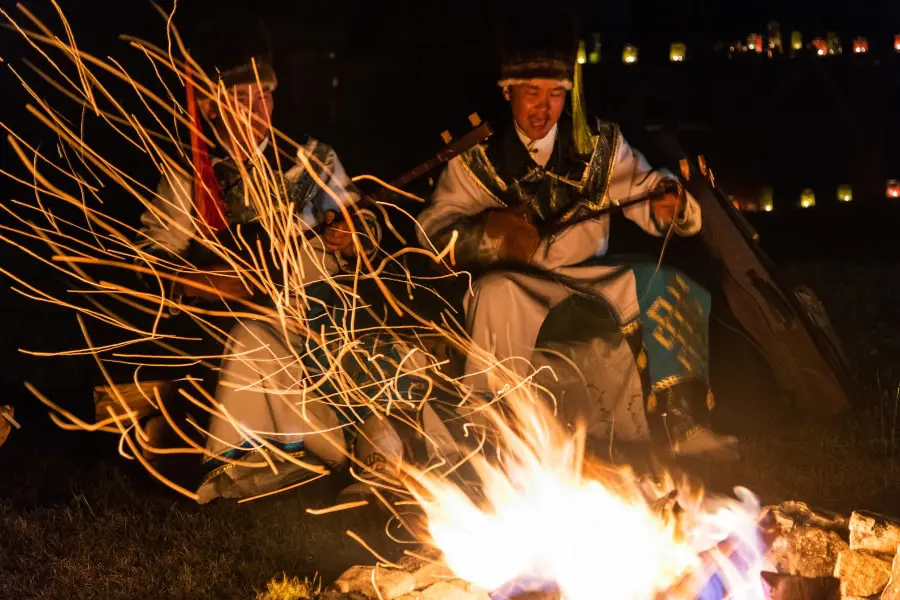
Religious festivals tend to be family and community affairs, and each community. Since the Altai Republic has become more open and accessible to outsiders, a number of traditional festivals have evolved into more extravagant events, often involving large gatherings from different communities and a welcoming attitude to visitors.
Held over three days, El Oyin is Altai’s national festival and a celebration of the Altaian people’s nomadic culture. events are held around Altai, but most of the action takes place in a picturesque valley near the village of Elo in central Altai’s Ongudaysky District. The valley becomes an enchanting open-air stage, with music, dancing and theatrical performances by epic storytellers and master of throat singing. The event has grown over the years, with foreign visitors among a contingent of at least 20,000 spectators, regaled with costume parades, yurt building competitions, horse racing, rodeo wrangling, wrestling and archery contests. The atmosphere is joyous and proud and gives outsiders a rare opportunity to interact with people from various Altaian communities. Participants come from all across Altai, dressed in traditional ceremonial garb. By keeping their historical customs and traditions alive through an annual celebration, El Oyin helps to ensure Altaian identity remains strong in the hearts and minds of the next generations.
When to go to Altai
The Altai Republic has three main climatic zones – warm and humid continental, subarctic and cold semi-arid, making it essentially a year-round destination.
A decision on when to go to Altai should be made depending on what you want to do there. Altai’s climate is known to be quite harsh. This region is famous for long frosty winters, and hot but short summers. But even in summer, the temperature may go down, so it’s crucial to have some warm clothes with you. Tourist season is in the full swing there usually in summer, and there’s no wonder: it’s the perfect time for people who would like to be involved in many different activities.
Summer
Generally, Summer starts at the end of May-June and finishes in September. During that time it’s quite warm during the daytime (about + 20- 25 Celsius) and cool in the night (about +5-10 Celcius). During June and
Winter
Winter in Altai starts in October-November. That’s when it starts snowing and the mountains are covering by snow from top to bottom. The best months for travelling in winter are November and December. During that time, there’s mostly good weather and not very cold. The coldest months are January and February. The average temperature goes down to -15-20 Celcius. After that, in February and March, the weather is quite nice again. There are a lot of activities you may enjoy during this time, like skiing, snowmobiling, dog
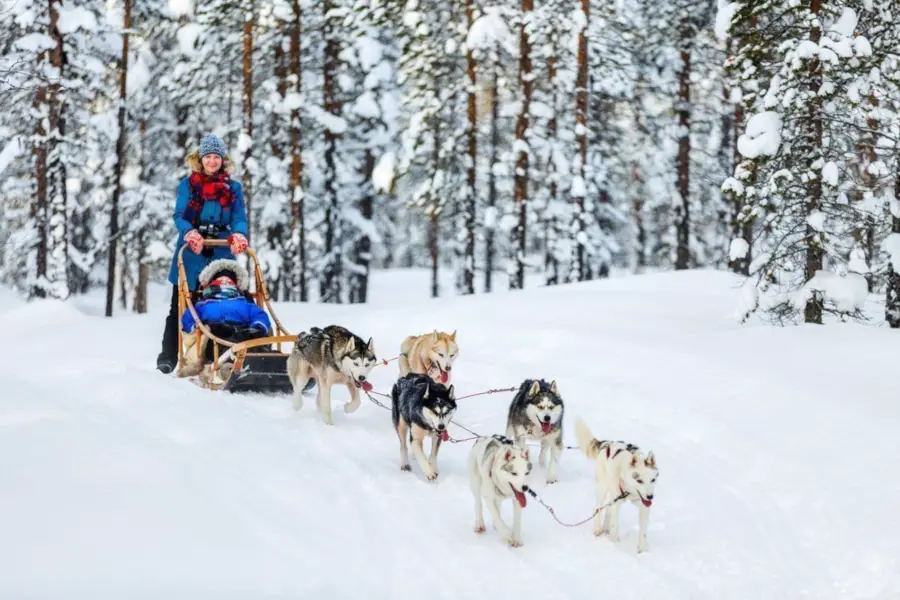
Spring
The snow usually starts to disappear in the first half of May, so it is a beautiful Springtime in Altai at this period. During May, the Altai Mountains turn into a huge flowering glade and start blazing purple. This Rhododendron (also called Maralnik by locals) blooming period is the main event of spring in the Altai mountains; this insanely beautiful sight attracts many travellers from all around the globe – the sort of the Siberian equivalent of Japan’s cherry blossom festival! Local people believe that if Maralnik has blossomed, then spring has finally entered into its rightful stage.
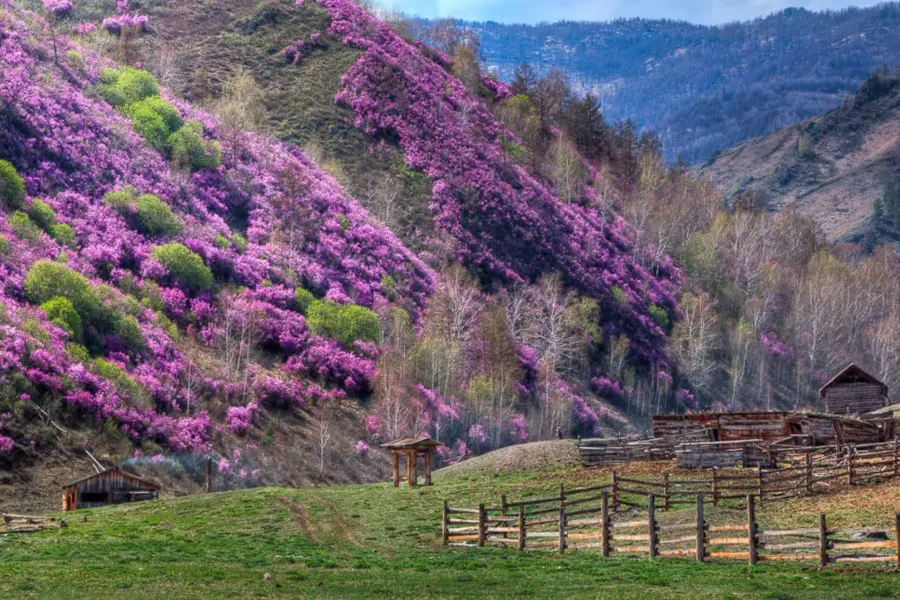
Autumn
Autumn is a shoulder season in Altai, and less visited as Summer or Winter, however, it’s one of the best times to come for the landscape photography experience. You’ll be given ample opportunity to snap stunning landscape photos of Altai at its very best. Contrasting colours are everywhere – red canyons, silver mountains, white glaciers, yellow grasslands, azure lakes, amber larch trees and evergreen cedar.
Transport in Altai – Getting There and Around
How to Get to Altai
By Plane
There are a handful of convenient options for reaching the Altai Mountains by air. From Moscow, you can take a direct flight to Gorno-Altaysk, the capital of the Altai Republic. S7 Airlines runs about two flights a week (check the schedule for seasonal changes to the timetable) with a flight time of about 4 hours.
Flights also operate several times a week from Moscow to Barnaul (just over 4 hours flight time). Larger, livelier and more developed that Gorno-Altaisk, it’s located further from the Altai Mountains, which makes this city second-popular after Gorno-Altaysk.
Although not part of the Altai Republic, lying 447km from the Altai capital of Gorno-Altaisk, Novosibirsk is one the most popular jumping-off points for trips into Altai. As the largest city in Siberia, Novosibirsk is well serviced by air, with daily flights to and from all the major Russian cities and some international flights from Frankfurts, Hannover, Beijing, Seoul and Tel Aviv.
By Train
You can also reach the Altai region travelling part of the way on the historic Trans-Siberian Railway. This is a rather more comfortable way to reach Altai by rail, and of course the Trans-Siberian is an incredible overland travel experience in itself.
You can board the Trans-Siberian at Moscow or another stop along the western part of the railway. To continue on to Altai, you’ll be taking the Trans-Siberian as far as Novosibirsk (a 2-day journey from Moscow). From Novosibirsk’s Main Station, you can catch a train on the 601H Route south into Altai. Expect to reach Barnaul (228km from Novosibirsk) in just under 10 hours.
By Bus
From Novosibirsk or Barnaul, the cheapest way to get into Gorno-Altaysk is by bus. There are around 4 to 5 trips per day from Novosibirsk, while buses depart from Baurnal roughly every 2 hours.
Accommodation in Altai
Hotels
With tourism still very much a developing industry in Altai, in many parts of the region, accommodation standards are still fairly basic. In larger towns like Gorno-Altaisk, Barnaul and Chemal, tourism is increasingly making an impact on the local economy. New hotels and resorts are springing up year after year, although the market still caters mainly to domestic Russian tourists. Comfortable lodgings and some luxury accommodation can easily be found in the main tourist areas. In the remote areas, the travelers stay in the nomad yurts or campsites.
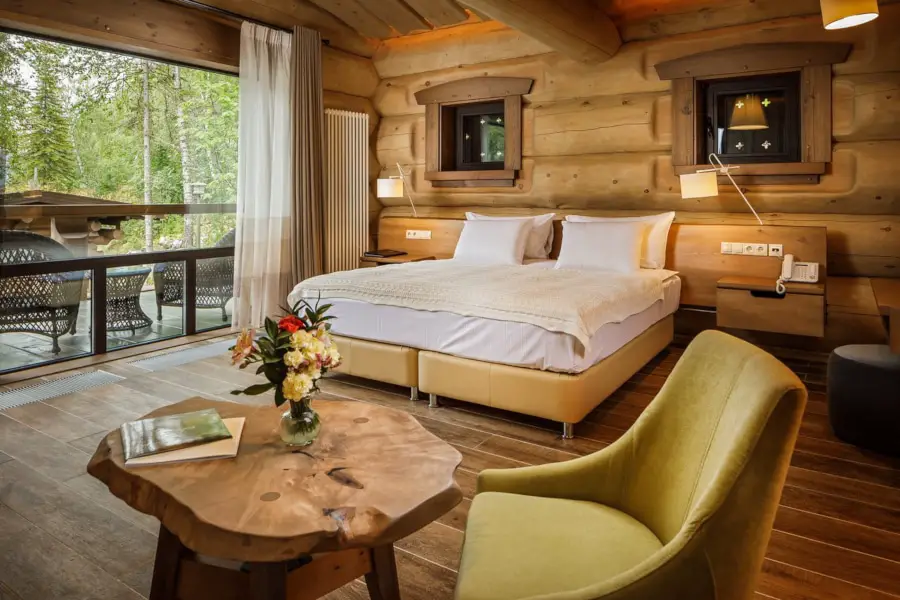
Campsites in Altai
Hiking and other outdoor activities in the Altai Mountains are by far the region’s biggest drawcards. To accommodate tourists on multi-day, outdoor expeditions, a number of private campsites, rest bases and simple guesthouses have sprung up, particularly in the northern part of the Altai Mountains, where the warmer climate attracts the largest numbers of hikers and trekking groups.
Campsites are mainly concentrated around:
- The northern shores of Lake Teletskoye (close to Artybash village)
- Several sites along the Katun River, easily accessible from the Chuysky Highway which runs parallel to the river
- Continuing south along the Katun to the Chemal tributary, a collection of riverside campsites are concentrated mainly in and around Chemal village
Below are some great options, from luxury hotels to camping grounds in Altai:
- Altay Resort (Urlu-Aspak village)
- Altika eco-hotel (Chyuisky Tract, Ust-Muny village)
- Altay Village (Teletskoye Lake, Artybash)
- Aitau Sporting Hotel (Chemal)
- Green Landia (Manzherok)
- Urochische Aktra (Teletskoye Lake, Artybash)
- Les i More glamping (Kosh-Agach)
- Nikolskaya Deer Farm (Nikolskoye village)
- Tayozhnik tourist complex (Manzherok)
- Klever Resort (Chemal)
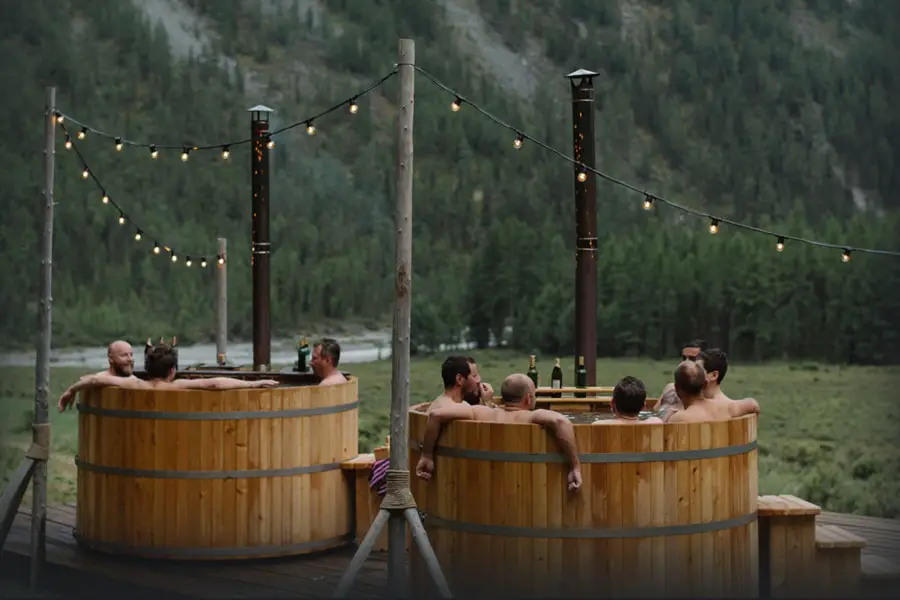
Tours in Altai
International tourism is still young in the Altai Republic. Even compared to other areas in Siberia, Altai is still very much a frontier destination, although a few places, like Chemal, have seen significant development in recent years. Still, most of this vast, mountainous region consists of wilderness and small, isolated settlements, making getting around as a traveller challenging.
Most visitors to the Altai arrive on pre-arranged tours, either in groups or with a private tour guide and driver. If you’re planning on a multi-day hiking or rafting expedition anywhere in Altai, a guide should be considered essential. We hope you enjoyed this Altai Travel Guide.
56th Parallel will soon be running small group tours to the Altai Republic. Private tours that cater to your interests can be arranged at any time, on request.
Related posts
If you have any urgent questions or enquiries, please give us a call +61 412 587 785
